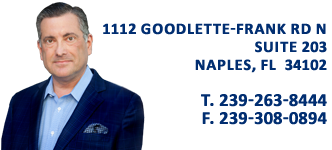| |
The ABCs of Rhinoplasty
Rhinoplasty is a surgery that alters the shape of the nose in appearance, function or both. The most common reasons a rhinoplasty is performed include:
to repair deformities from an injury, improve breathing, improve appearance of the nose, or to correct nasal abnormalities going back to birth.
When Would I Need Rhinoplasty?
Rhinoplasty is among the most common facial plastic surgery procedures performed. It can be done to improve the appearance of the nose,
as well as to improve breathing in a blocked or broken nose. Additionally, rhinoplasty can decrease the size of the nose and/or refine the shape
of the tip or the nasal bridge. For instance, rhinoplasty can remove a nasal "hump" or bump, narrow a wide nasal tip, or lift a drooping
tip. Large nostrils can be narrowed, crookedness straightened, and fractures - even old fractures - repaired.
The "medical" portion of these procedures is often covered by insurance.
Before undergoing a rhinoplasty, a patient will have an appointment with Dr. Greene for a thorough nasal evaluation, to discuss important
factors that determine whether the surgery is likely to be beneficial. During this initial appointment, Dr. Greene discusses with the patient
their individual medical history, the reasons for wanting a rhinoplasty, the expectations and likely outcome of the surgery, and a thorough
physical examination to determine the best course of action for the surgery.
How is a Rhinoplasty Performed?
Rhinoplasty is "same day surgery", performed under anesthesia, at the outpatient surgery center. You will go home the same day; NO hospitalization
is required. The surgery is done through an incision made inside the nostrils. In some cases, a tiny incision is also made in an area between the
nostrils. The modifications to the structure of the nose are customized and different for every person, depending on the changes each person wants,
and the nasal corrections and repairs that they need. After the surgery is performed, a splint will be placed on the outside of the nose to help
maintain the new shape of the bone.
What Can I Expect After My Rhinoplasty
After your procedure is completed, a soft splint with breathing tubes may be placed inside your nose. Dr. Greene avoids packing in nearly every case.
A small splint placed on the outside of your nose will support and protect the new structures during initial healing. You will be given specific
instructions to follow during your recovery from rhinoplasty, including how to care for the surgical site, medications to apply or take orally to
aid healing and reduce the potential for infection, as well as complete postoperative instructions, and follow-up appointments Dr. Greene.
Back to Services & Procedures main page
|
|
|
| |
Did You Know?
Did you know that the decision to undergo a rhinoplasty is not only for cosmetic reasons? Some of the common reasons
that a patient undergoes this surgery is to correct the structure of the nasal passages, to repair the effects of a trauma or accident
and to help alleviate breathing or snoring problems. A medical consultation is the best way to determine what course
of action is best for your individual needs. Call us at 239.263.8444 to set up an appointment today.
Insurance Coverage
Most insurance companies and
Medicare cover Rhinoplasty if the surgery is performed for functional or medical reasons.
To be certain of your surgery
insurance coverage, contact your
insurance provider or call our office
and we can help determine if your policy covers this procedure.
To learn more about our insurance options, visit our insurance section of this website.
|
|
|







